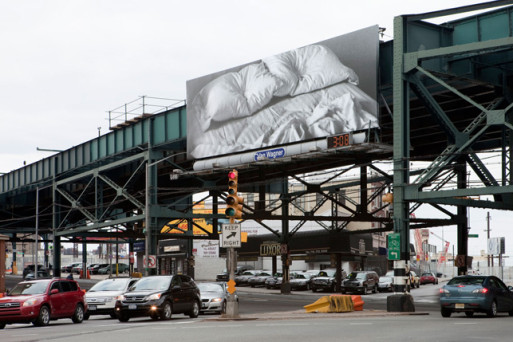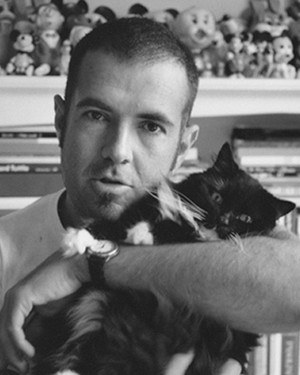Between February 20th and March 18th of 1991, 24 billboards throughout Manhattan showcased the monochrome image of an unmade double bed with rumpled sheets and depressions of a head in the center of each of the two pillows. No explanation accompanied the image; if it was an advertisement for something, it was failing miserably. The billboards, in fact, were an art installation called Untitled, by Cuban-born American artist Felix Gonzalez-Torres.
The depressions in the pillows and the rumpled sheets announced both the presence and absence of bodies.
In the early 1990s, the HIV/AIDS crisis was at a fever pitch, and the bed in Unititled serves as an allegorical representation of the crisis. The depressions in the pillows and the rumpled sheets announced both the presence and absence of bodies. On a more personal note, the Untitled was an homage to Gonzalez-Torres’s partner Ross, who died of AIDS complications in 1991, the same year the installation went up (Gonzalez-Torres himself died of AIDS complications in 1996). The number 24 commemorates the date that Ross died. The bed in Untitled is a site of conflict, a poignant reminder of both the companionship that once existed there and the loneliness after its loss.
Felix Gonzalez-Torres was a member of Group Material, a New York-based artist collective active from 1979 to 1996, who came together with the intention of uniting their political activism with their art practices. Group Material’s art installations aimed to generate public discussion about social issues. That ethos is inherent in the execution of Untitled, which interjected a powerful statement into the conversation around AIDS/HIV that was taking place at the time. From its beginning, in 1981, public discourse conflated the AIDS/HIV epidemic with homosexuality, and the virus was visually represented almost exclusively by images of gay men as victims. Untitled doesn’t depict a particular body of a person with AIDS, and therefore interrupts the near-universality of that dominant representation of the disease. The anonymity of the absent bodies in Untitled implies that the depressions could have been made by anybody (or any body).
In bringing an image of the private space of the bed into the public realm of the cityscape, Gonzalez-Torres brought his private mourning into the public sphere.
For Gonzalez-Torres, art was “one enormous collaboration with the public.” The stark image featured on the billboards of Untitled leaves a lot of room for collaboration, for the viewer to project onto the piece all that a bed can represent. In bringing an image of the private space of the bed into the public realm of the cityscape, Gonzalez-Torres brought his private mourning into the public sphere. He was inviting his viewer to participate in an experience of mourning, and to connect to the universal experience of having loved and having lost someone.

 No Body There: The Empty Bed And The HIV/AIDS Crisis
No Body There: The Empty Bed And The HIV/AIDS Crisis




 Debating Medical Aid in Dying
Debating Medical Aid in Dying
 “Help Me, Helen”
“Help Me, Helen”















